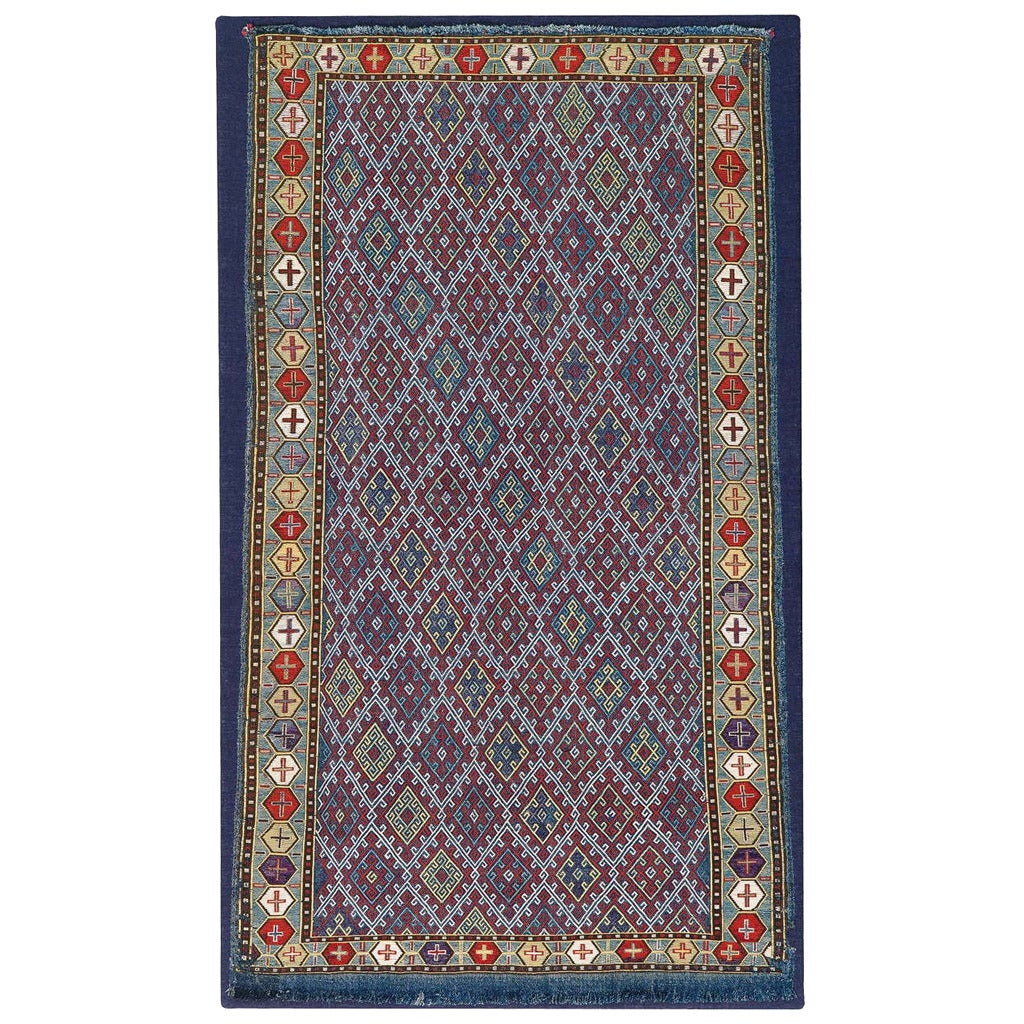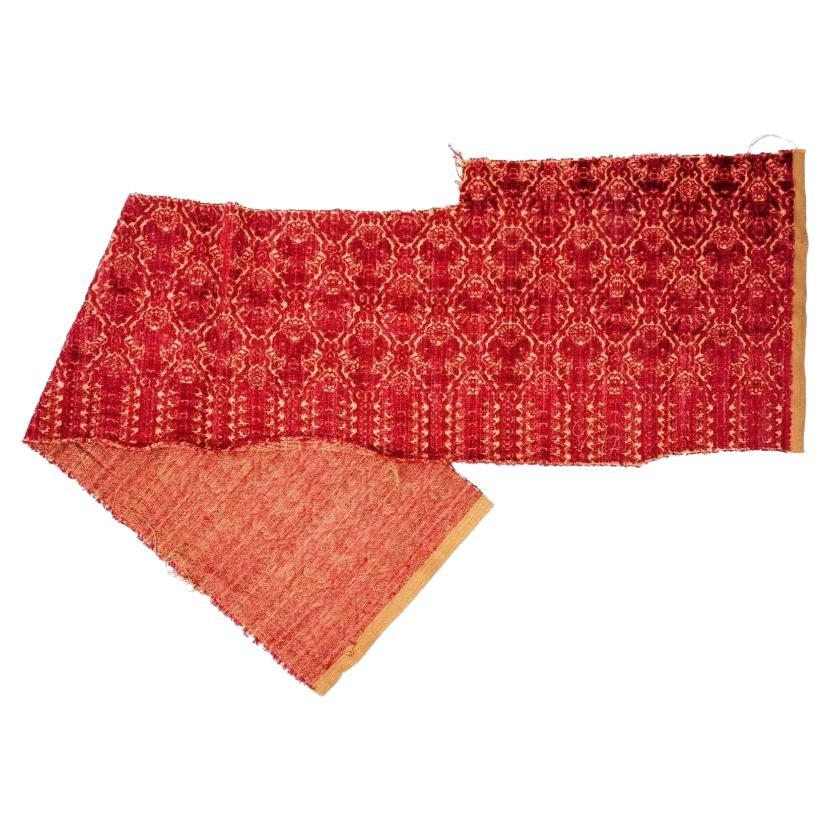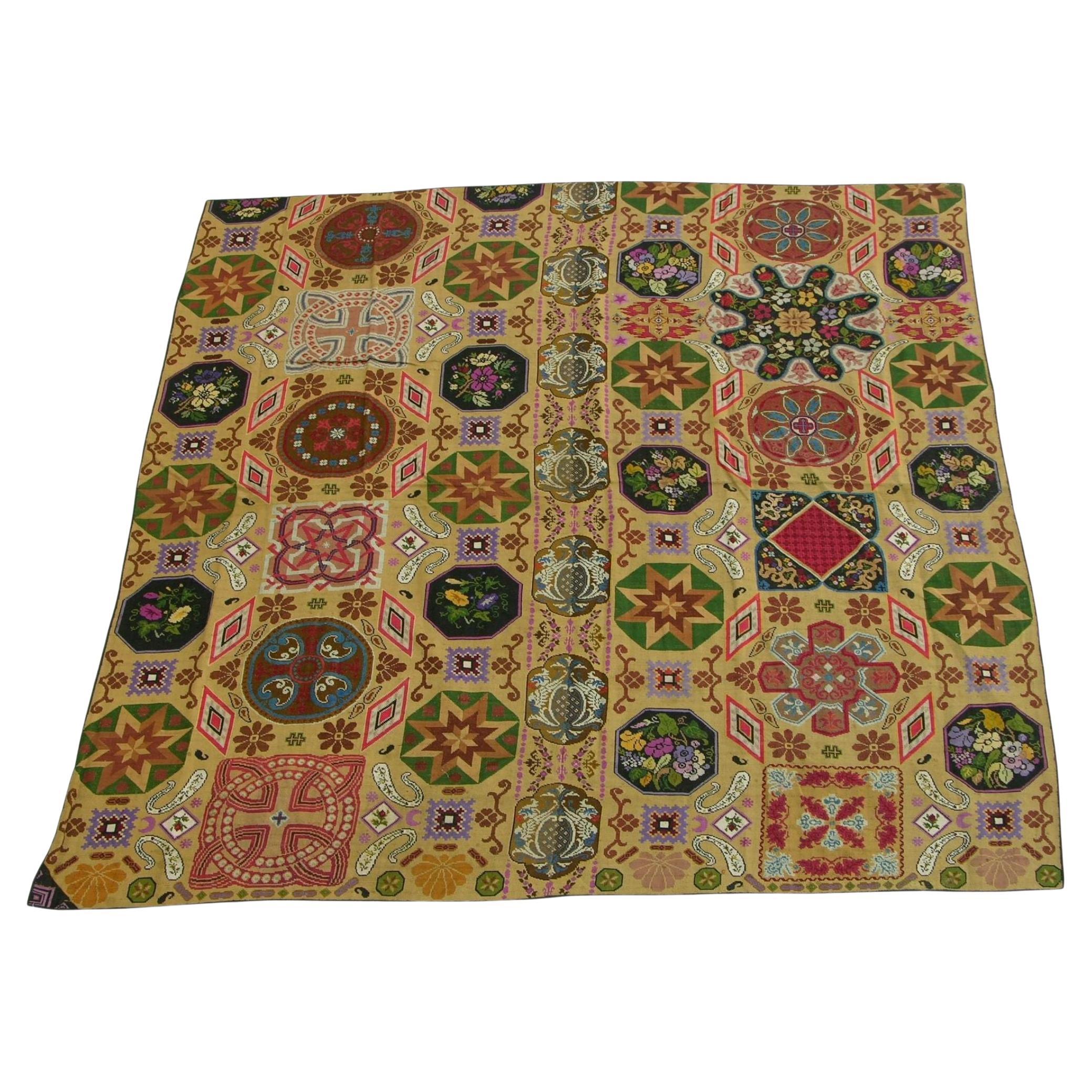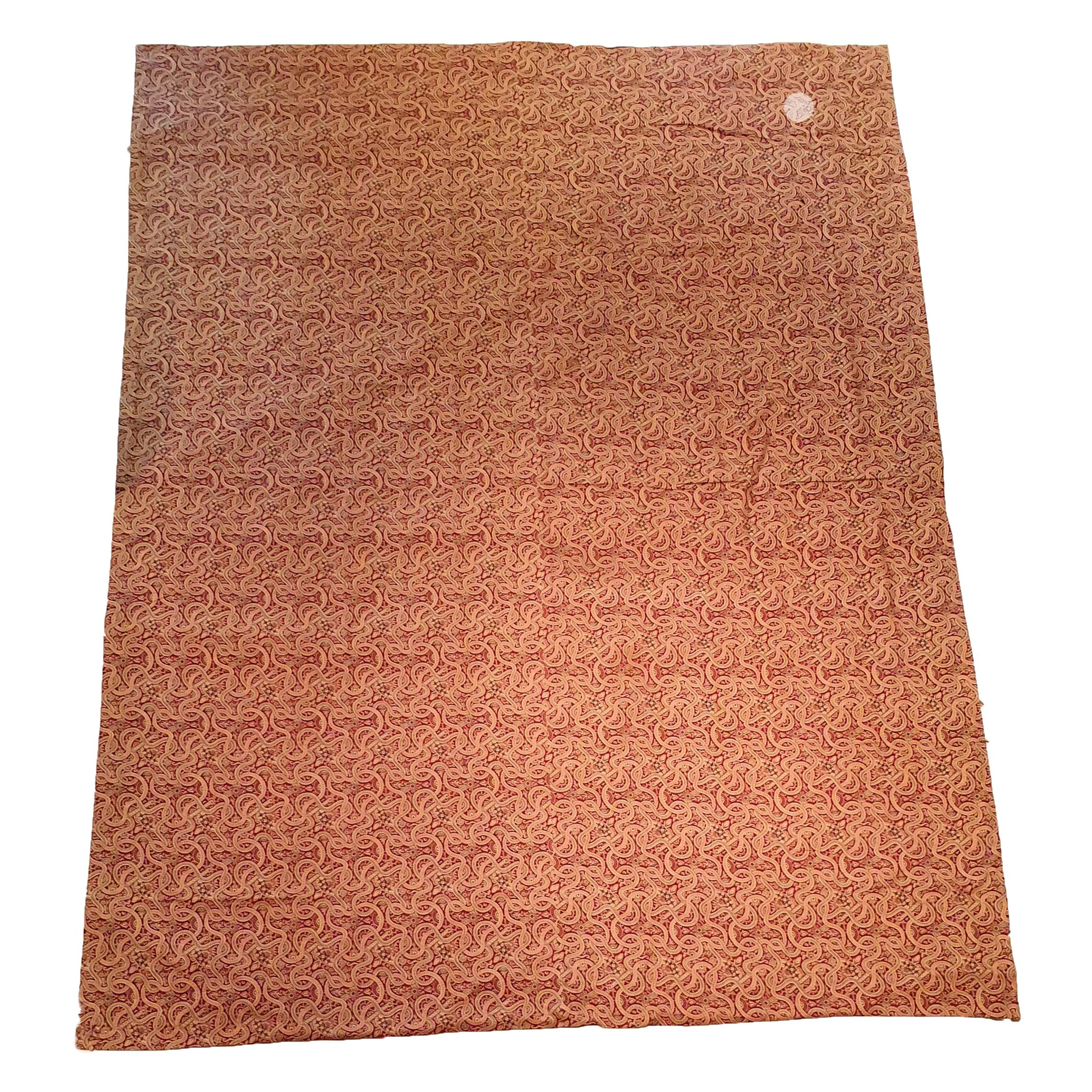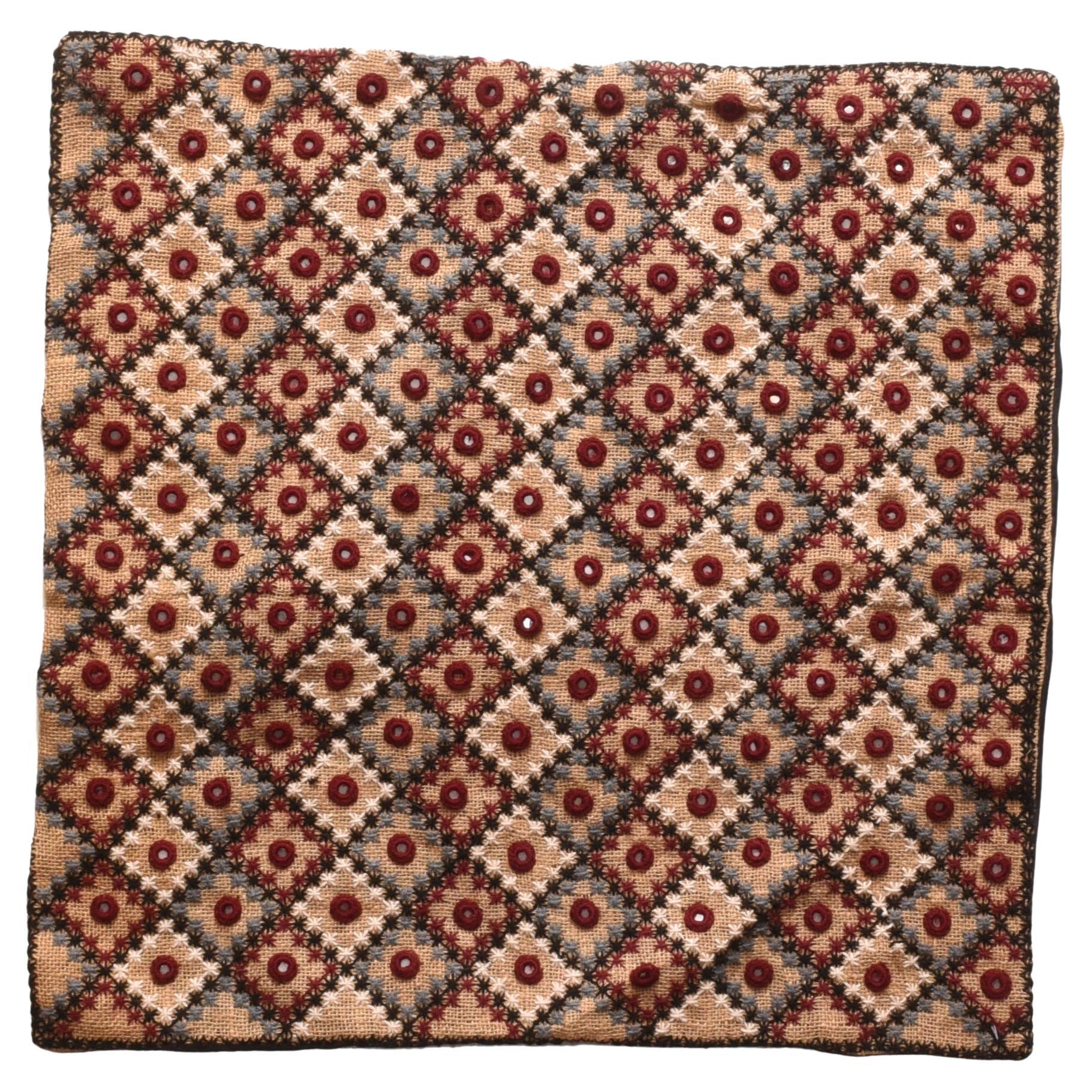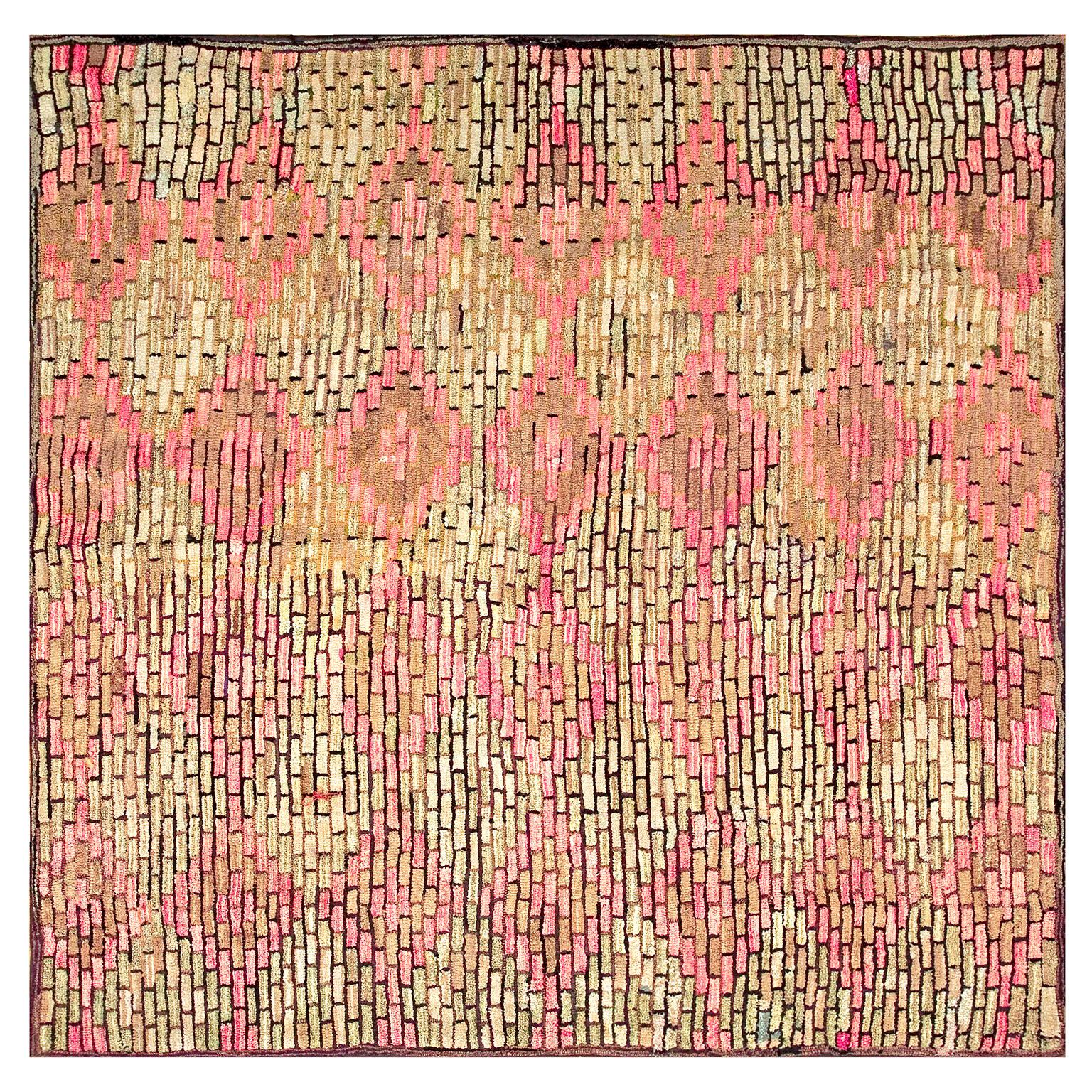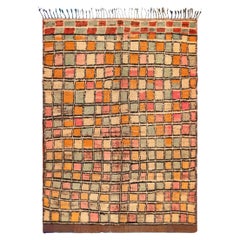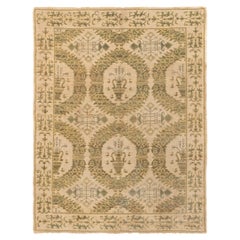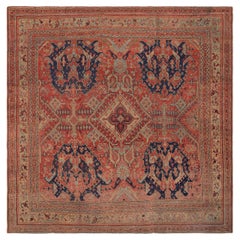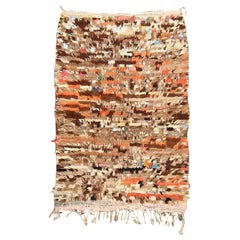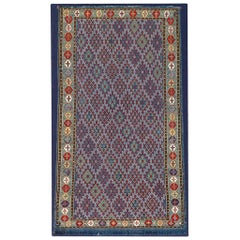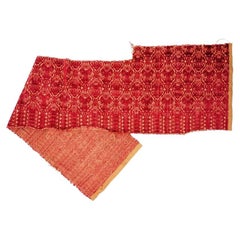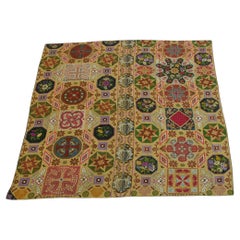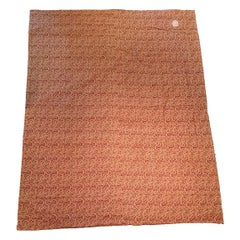Want more images or videos?
Request additional images or videos from the seller
1 of 5
Antique Textile
$2,499
£1,897.20
€2,169.99
CA$3,491.47
A$3,883.27
CHF 2,027.72
MX$47,255.29
NOK 25,897.13
SEK 24,286.94
DKK 16,195.47
Shipping
Retrieving quote...The 1stDibs Promise:
Authenticity Guarantee,
Money-Back Guarantee,
24-Hour Cancellation
About the Item
Rare, double-sided piece, this piece is 100% hand-loomed wool. Vivid reds, brown, terra cotta colors with hints of green.
- Dimensions:Height: 53 in (134.62 cm)Width: 54 in (137.16 cm)Depth: 0.1 in (2.54 mm)
- Materials and Techniques:
- Place of Origin:
- Period:
- Date of Manufacture:1880s
- Condition:
- Seller Location:Los Angeles, CA
- Reference Number:Seller: D-89611stDibs: U101115902913
About the Seller
5.0
Vetted Professional Seller
Every seller passes strict standards for authenticity and reliability
Established in 1995
1stDibs seller since 2010
18 sales on 1stDibs
- ShippingRetrieving quote...Shipping from: Los Angeles, CA
- Return Policy
Authenticity Guarantee
In the unlikely event there’s an issue with an item’s authenticity, contact us within 1 year for a full refund. DetailsMoney-Back Guarantee
If your item is not as described, is damaged in transit, or does not arrive, contact us within 7 days for a full refund. Details24-Hour Cancellation
You have a 24-hour grace period in which to reconsider your purchase, with no questions asked.Vetted Professional Sellers
Our world-class sellers must adhere to strict standards for service and quality, maintaining the integrity of our listings.Price-Match Guarantee
If you find that a seller listed the same item for a lower price elsewhere, we’ll match it.Trusted Global Delivery
Our best-in-class carrier network provides specialized shipping options worldwide, including custom delivery.More From This Seller
View AllVintage Moroccan Rug
Located in Los Angeles, CA
Vintage Moroccan Rug with colorful square patterns
Category
Vintage 1950s Moroccan Indian Rugs
Materials
Wool
$6,799
Contemporary Antique Portuguese Rug
Located in Los Angeles, CA
A unique and exquisite piece that combines elements of contemporary design with the charm of antique Portuguese craftsmanship. The rug features a captivating color palette dominated ...
Category
Antique 18th Century Turkish Rugs
Materials
Wool
Antique Oushak Rug
Located in Los Angeles, CA
Large square Oushak rug with lovely red, navy, cream and light celedon green. This Oushak rug has a short, soft pile and is an unusual square size.
Category
Antique 19th Century Turkish Turkish Rugs
Materials
Wool
$25,499
Vintage Moroccan Boucherouite Rug
Located in Los Angeles, CA
Made of wool with knotted rag and yarn pieces create this one of a kind colorful carpet.
Category
Vintage 1970s Moroccan Moroccan and North African Rugs
Materials
Wool
Antique Danish Wool Rug
Located in Los Angeles, CA
Detailed dutch rug hand loomed with vibrant colors and design.
Category
Vintage 1930s Danish Russian and Scandinavian Rugs
Materials
Wool
$9,499
Antique Fine Malayer Rug
Located in Los Angeles, CA
This antique Oriental rug from the 1880s boasts a mesmerizing floral design on an ivory field. Its timeless beauty radiates elegance and sophistication, elevating the aesthetic of an...
Category
Antique Late 18th Century Turkish Rugs
Materials
Wool
$7,499
You May Also Like
19th Century Fine Silk Flat-Weave
Located in San Francisco, CA
This finely executed silk "zilleh" employs a supplemental weft all-over diamond pattern against a flatwoven tapestry-weave ground. The gem-like tones glisten from their shimmering wh...
Category
Antique 19th Century Azerbaijani Quilts and Blankets
Materials
Wool
19Th C Antique Italian Hand Woven Textile
Located in Long Island City, NY
An antique 19th century Italian hand woven textile. The textile is decorated with a red symmetric geometrical ornament. Antique Italian Textiles, Wall and Home Decor, and Collectible...
Category
Antique 19th Century Italian Quilts and Blankets
Materials
Textile
$325 Sale Price
50% Off
Antique Collectible Woolen Needlework
Located in Los Angeles, US
Needlepoint rugs were created using the traditional needlework weaving technique that is used to make everyday items from furniture to carpets and artwork. However, it has a fascinating history both as a hobby and as an industry. When many people think of carpets, they think of pile carpets or flat weave kilims, but needlepoint has also been used to create beautiful carpets. These carpets are durable and an important part of carpet history.
Archaeologists and scholars consider the roots of needlepoint to have been around 1500 BC. They consider the first needlepoint to include the fine diagonal stitches that were used to sew tents together by the ancient Egyptians. The art eventually evolved into tapestry weaving. However, a tapestry weaving differs significantly from needlepoint in that it uses a loom and vertical warp.
Tapestry weaving is closer to the weaving of kilims and pile rugs than canvas work. However, some still include tapestry weaving in the category of needlepoint because of the fine work that appeared during the late Renaissance. It can have a similar appearance to the untrained eye. Technically, tapestry weaving and needlepoint are not the same, and they do not use the same technique.
The first actual needlepoint rugs and needle-points began to appear in the late Renaissance. Needlepoint is worked by creating stitches on a stiff canvas. The canvas is typically made from jute or linen and is quite durable. Pieces from the Renaissance were used to cover footstools, chairs, pillows, bed headboards, and other furnishings. They were also used as table coverings and wall coverings. You could also find them on many small items such as purses, shoes, and various adornments for clothing.
During the Renaissance, the craft reached a high level of skill, and the designs became incredibly detailed and realistic. They mimicked many of the subjects and styles of famous paintings of the time. They created florals, still life designs, scenes, and geometric tiled pieces. Some of them mimicked the designs found in Persian Carpets.
Needlepoint reached its peak popularity in the 19th century when it was considered a proper occupation for a lady. Needlepoint and embroidery held a similar place in societal status at the time. During this time, the work became finer, with some of the canvas reaching a high level of detail. The level of detail is determined by counting the number of mesh in an inch. During this time petit point by French needlewomen could have a mesh count as high as 45 mesh. This allowed women to create highly intricate designs with incredible levels of detail.
It is possible to find many antique pieces of needlepoint besides rugs. Needlepoint rugs were popular in France and Spain, where the technique was adapted to create highly intricate designs that mimicked the designs in architecture and fashion. They were popular because they were durable, and it could be fashioned into a variety of items. The canvases themselves were durable, and the wool that they used was also strong, which means that many of the pieces were able to withstand daily use. We have many artifacts that have survived from this time period.
Needlepoint rugs are important collectibles because they are different from the pile rugs and kilims that are typically found on the market. Needlepoint carpets are special because they take many hours to create, especially larger works. Needlepoint pieces of any type became popular throughout Europe during the 19th century. It is still a popular hobby today, but perhaps one of the most interesting stories is that of the Portuguese needlewomen of Arraiolos.
The story of these women and their beautiful carpets begins in 1492. Needlepoint was a popular occupation in Spain, which had a large population of Moors and Jews. They were an integral part of Spanish culture. However, in 1492, Queen Isabella of Spain issued a proclamation that gave these ethnic groups the order to pack their bags and board ships headed...
Category
Antique Early 1900s Other Russian and Scandinavian Rugs
Materials
Wool
726 - 19th Century French Textile
Located in Paris, FR
726 - 19th century French textile.
Category
Antique 1880s French Arts and Crafts Decorative Art
Materials
Cotton
Vintage Textile Rug 2'3'' x 2'3''
Located in New York, NY
Vintage Textile Rug 2'3'' x 2'3''.
Category
Vintage 1940s Spanish More Carpets
Materials
Wool, Cotton
Antique American Hooked Rugs
Located in New York, NY
Antique American Hooked rugs, size: 6' 5'' x 6' 6''.
Category
Antique Early 1900s American North and South American Rugs
Materials
Wool
More Ways To Browse
Green Terra Cotta
Gujarati Furniture
Kuba Skirt
Vintage Satin Blanket
Antique Basket Quilt
Pendleton Trade Blanket
African Kente Cloth
Antique Quilt Company
English Needlework Sampler
Ewe Kente
Vintage Kente Cloth
Welsh Blanket
Beaver Blanket
Vintage Italian Wool Blanket
Beacon Blanket
Italian Velvet Blanket
Mud Cloth Pillows
Mulligan Furniture
